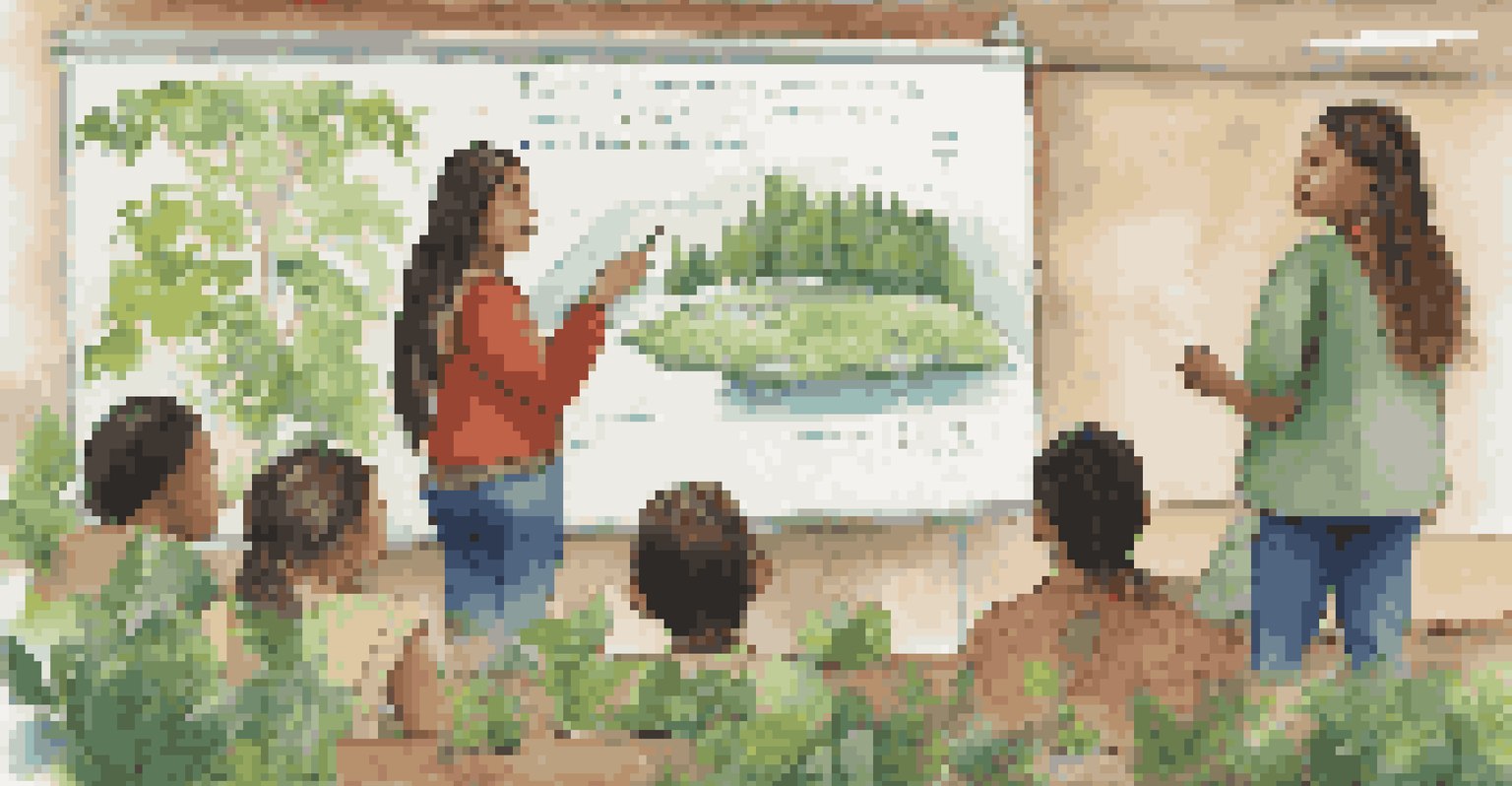Role of Cultural Narratives in Shaping Cognitive Skills in Students

Understanding Cultural Narratives in Education
Cultural narratives are the stories and experiences that shape a community's identity. They influence how students perceive the world and their place within it. By understanding these narratives, educators can connect lessons to students' backgrounds, making learning more relevant and engaging.
Education is not the filling of a pail, but the lighting of a fire.
For instance, a lesson on history can be enriched by incorporating local legends or family stories. This not only makes the content relatable but also fosters a sense of belonging. When students see their culture reflected in the curriculum, they are more likely to engage actively and retain information.
Ultimately, acknowledging cultural narratives in education can lead to a more inclusive and enriching classroom environment. It opens doors for diverse perspectives, allowing all students to feel valued and understood.
Cognitive Skills: What Are They and Why Matter
Cognitive skills refer to the mental processes that enable us to think, learn, and remember. They include abilities like problem-solving, critical thinking, and memory recall. Developing these skills is essential for academic success and lifelong learning.

When students engage with cultural narratives, they practice these cognitive skills in meaningful contexts. For example, analyzing a cultural story can enhance critical thinking as students evaluate different perspectives and themes. This process not only improves their cognitive abilities but also prepares them for real-world challenges.
Cultural Narratives Enhance Learning
Incorporating cultural narratives into education makes lessons more relevant and engaging for students.
In short, fostering cognitive skills through cultural narratives equips students with the tools they need to navigate complex situations in and beyond their educational journey.
The Influence of Storytelling on Cognitive Development
Storytelling is a powerful tool in education, particularly when it comes to cognitive development. It allows students to explore ideas, emotions, and cultural values in an engaging way. When students share and listen to stories, they strengthen their comprehension and communication skills.
The more that you read, the more things you will know. The more that you learn, the more places you'll go.
Consider a classroom where students share folktales from their cultures. This exchange not only promotes empathy but also enhances their ability to analyze and synthesize information. As they discuss the morals and lessons of each story, they practice critical thinking and collaborative skills.
Thus, storytelling rooted in cultural narratives can significantly enrich students' cognitive abilities while fostering a sense of community and understanding.
Cultural Narratives and Emotional Intelligence
Emotional intelligence, or the ability to understand and manage emotions, is crucial for students' overall development. Cultural narratives play a significant role in shaping this intelligence by providing relatable contexts for emotional experiences. Through stories, students can identify with characters and their feelings, enhancing their empathy.
For example, narratives about overcoming adversity can inspire resilience and coping strategies. When students see how characters navigate challenges, they can reflect on their own experiences and emotions. This reflection cultivates a deeper understanding of themselves and others.
Cognitive Skills Through Storytelling
Engaging with cultural stories helps develop critical cognitive skills like problem-solving and empathy.
Consequently, integrating cultural narratives in education not only boosts cognitive skills but also fosters emotional growth, preparing students for interpersonal relationships in their lives.
Integrating Cultural Narratives into the Curriculum
To effectively harness the power of cultural narratives, educators need to integrate them into the curriculum thoughtfully. This involves selecting diverse stories that resonate with students' backgrounds and experiences. Teachers can create lesson plans that include discussions, projects, and presentations centered around these narratives.
For instance, a unit on environmental science can include indigenous stories about land stewardship. This approach not only enriches the subject matter but also emphasizes the importance of different cultural perspectives. Such integration encourages students to think critically about global issues while appreciating diverse viewpoints.
By embedding cultural narratives into the curriculum, educators can create a rich tapestry of learning experiences that promote cognitive skills and cultural awareness.
Challenges in Recognizing Cultural Narratives
While the benefits of integrating cultural narratives are clear, challenges still exist in recognizing and incorporating them. One significant hurdle is the lack of resources or training for educators on culturally relevant teaching practices. Many teachers may feel unprepared to address diverse narratives in their classrooms.
Additionally, some narratives may not be well-known or documented, making it difficult for educators to find appropriate materials. This can lead to a homogenized curriculum that fails to reflect the diversity of students' backgrounds. Without proper representation, students may feel alienated or disengaged.
Cultural Narratives Enhance Learning
Incorporating cultural narratives into education makes lessons more relatable and engaging for students.
Addressing these challenges requires a concerted effort from educational institutions to provide resources, training, and support for teachers. By doing so, they can empower educators to embrace cultural narratives and enrich their students' learning experiences.
The Future: Embracing Cultural Narratives in Learning
As we look to the future of education, embracing cultural narratives will be essential in preparing students for a globalized world. With increasing diversity in classrooms, understanding and valuing different perspectives will become even more crucial. Cultural narratives offer a roadmap for this journey, providing insights into various cultures and experiences.
Innovative teaching strategies, such as project-based learning and collaborative storytelling, can further enhance students' engagement with cultural narratives. These approaches encourage active participation and creativity, allowing students to explore and express their understanding of the world around them.

In conclusion, by prioritizing cultural narratives in education, we can help shape well-rounded individuals equipped with the cognitive skills and emotional intelligence necessary for success in an interconnected society.